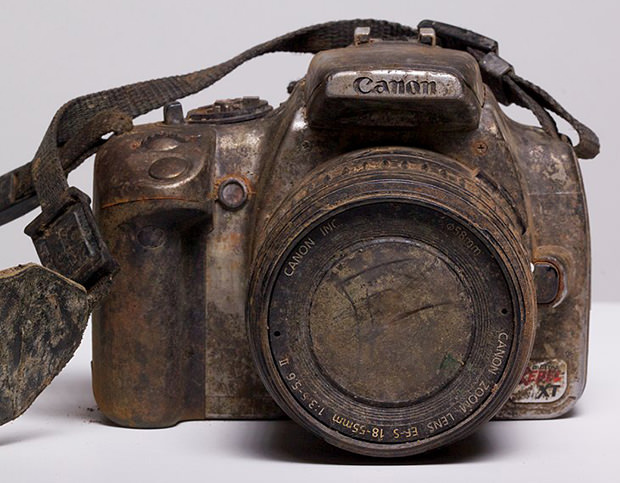June 1, 2011
DSLR Tips
I try to share some tips that may be useful for the photographer who just moved from pocket cameras to digital SLR cameras. With the wide range of manual features to automatic, and availability of various types and kinds of lenses and accessories as well, often create confusion novice photographers.
Here are some tips that might be done:
All photographers have a style and technical collection of different photographs. All you have to do is a lot of practice and practice directly to find your own style of photographs.
 |
Title : DirtyCredits : Michael ComeauSource : http://petapixel.com/2012/08/22/what-a-canon-rebel-xt-dslr-looks-like-after-3-years-in-a-muddy-creek/ |
Here are some tips that might be done:
- Do not waste your camera's manual. It’s because the manual is supposed to be your best friend. Read as often as possible, especially in the first months after buying a DSLR camera. Keep a place that can quickly be retrieved and discover such as in your camera bag.
- Buy a UV filter for each lens you. It’s because in addition to functioning as a filter that enhance the images, filters can also protect the lens. It's easier and cheaper to replace a scratched filter than the actual lens.
- Learn to use the entire setting for your DSLR camera. Despite what you may think you'll never use it. Learning to change the ISO setting, aperture and shutter speed, until you really master it. An animal that becomes the object your picture will not sit and pose long enough when you are still fumbling to change the camera settings.
- Additional UV filters other than, other important equipment you should have is a tripod and remote release. Both are very useful when taking photos that require a long shutter speed. For example photo night and slow movement of water currents.
- Read a book or magazine photography as much as possible. The best is a book / magazine which contained an explanation of the camera settings used, and the picture.
- Never touch or blow parts such as glass inside the camera body when you remove the lens. If you damage the sensor, the same thing you have to buy a new camera, because the cost of replacing about the same as the price of a new camera. If you find a point / spot appears in the photos, buy a cleaning kit or a dust blower.
- Do not change lenses when you are outside the room and the wind was blowing quite strong. Attach the lens to your camera body before you leave the room. If you have to change your lenses in outdoors, face the front of your camera downward. This is to preventing dust to not hit the camera sensor.
- If the first time when taking photos, you get the blur, change the setting to a fast shutter speed. The faster the photo was taken, the less likely to be affected by camera shake. Hold the camera closer to the body or resting on something can also help. If you take landscape photos, stabilize your body by resting on a tree.
- When buying a bag for digital SLR cameras, consider also for the future. Most photographers have at least 3 lenses.
- Learn what the RAW format is. Setting your DSLR camera to save photos in RAW format, which is also useful for beginner photographers. When you take photos with white balance or image settings are wrong, you still can fix it by using the RAW editor in the computer. Also it’s very useful when you only have one chance to take photos. For example, birds in flight, of course, will not continue until you get across your white balance setting appropriate for the situation.
- The best way to learn about DSLR is through practice. If you take photos of water flow, try using a fast and slow shutter to prove it different results. Or when taking photos of beautiful natural scenery, try with different aperture settings. You would be surprised by the variety of photos for one scene with the captured using a variety of settings.
- Press the shutter button halfway to get pre focus first before you take a picture. This usually will produce a sharper image. Also very helpful when you can anticipate when the object images are included in your frame. You can do pre focus to that point by pressing the shutter button half, and when the object passes, then press fully.
All photographers have a style and technical collection of different photographs. All you have to do is a lot of practice and practice directly to find your own style of photographs.
Subscribe to:
Post Comments (Atom)




No comments:
Post a Comment